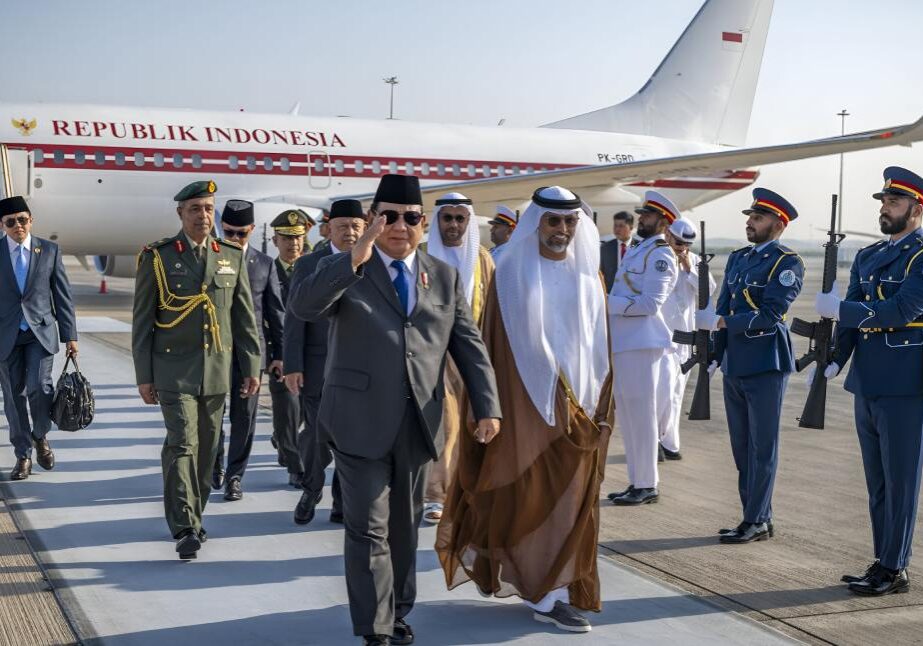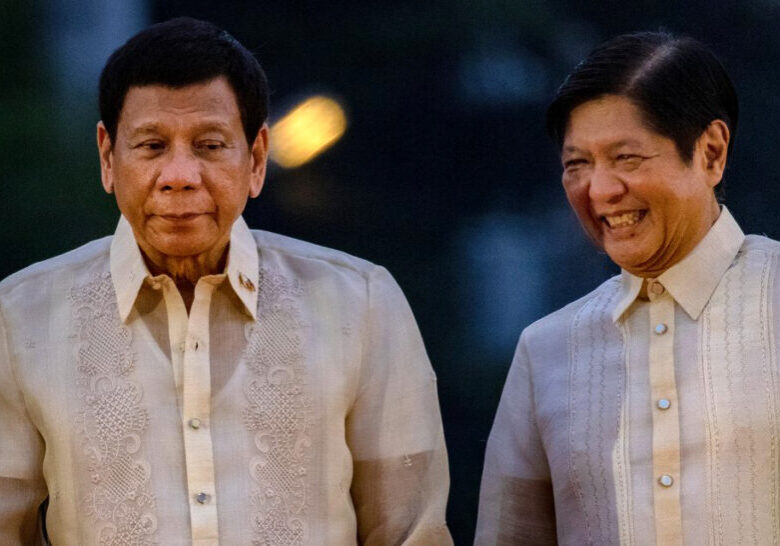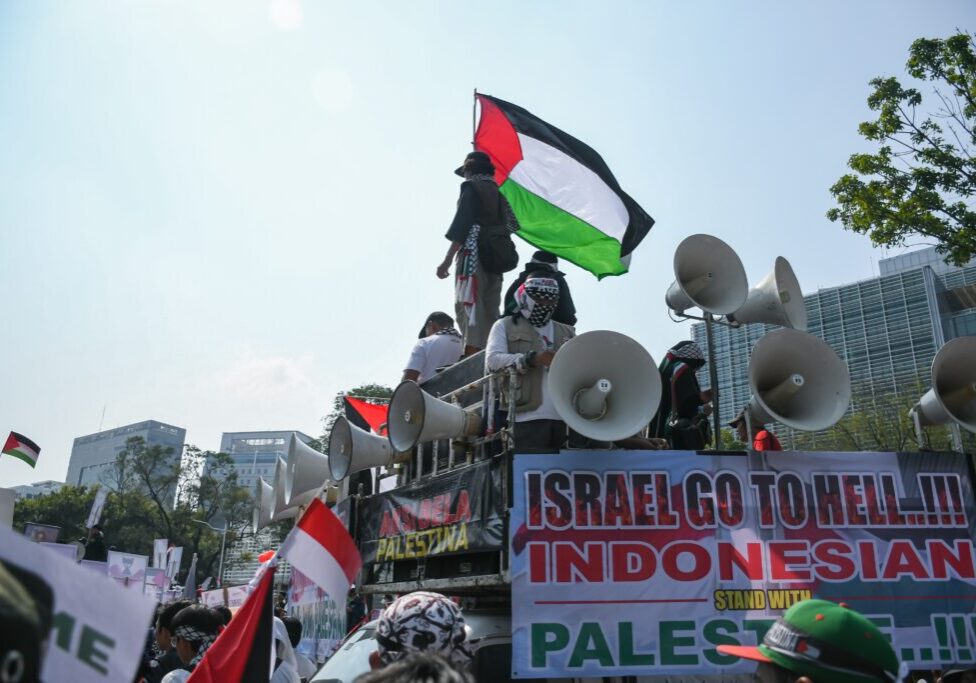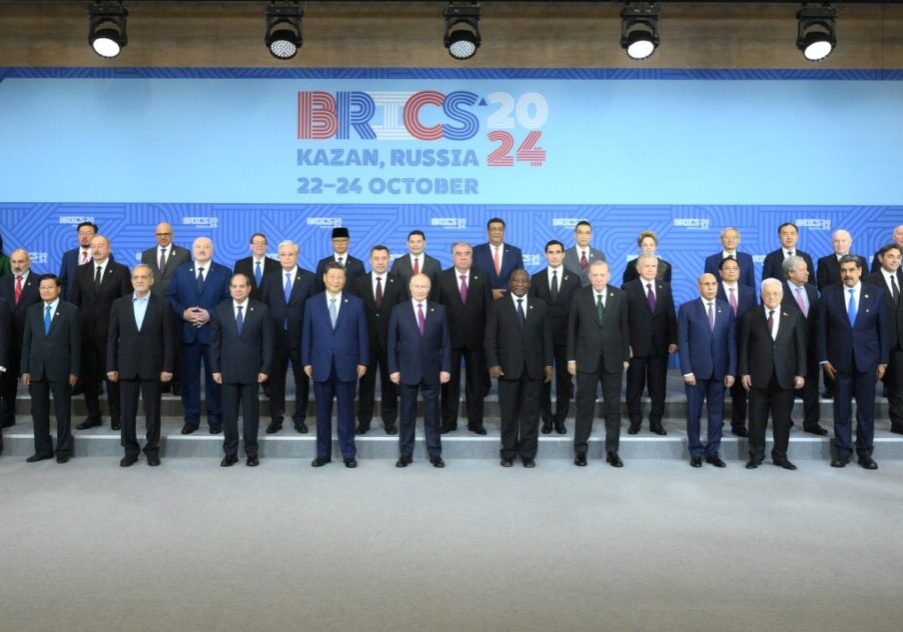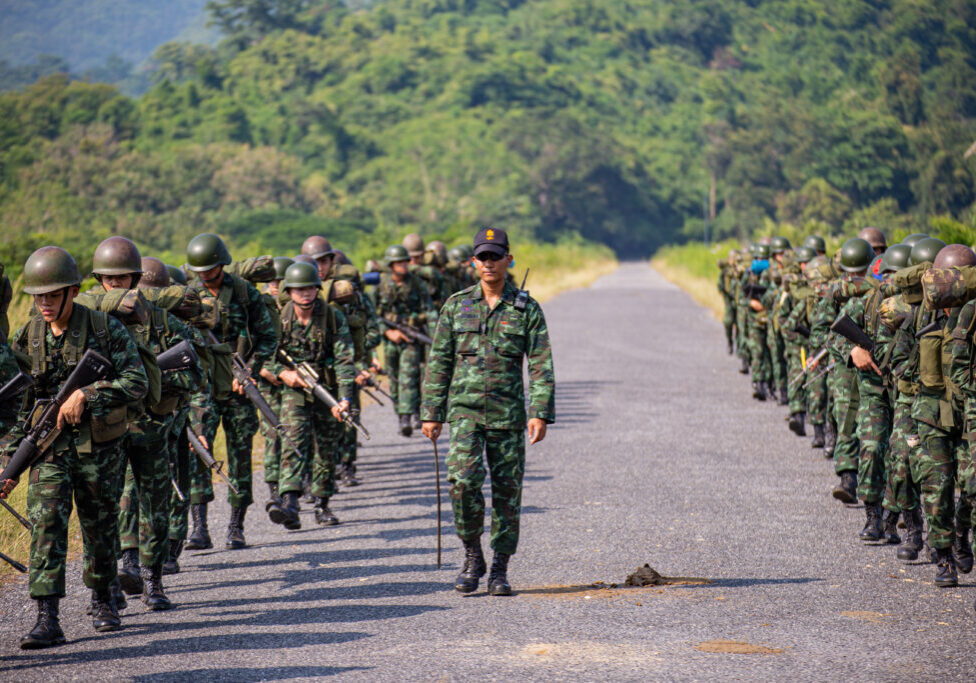Australia/Israel Review
From Pyongyang with love
Nov 1, 2010 | Allon Lee

Allon Lee
It may not be widely understood, nor fashionable to acknowledge, but former US President George W. Bush was actually not wide of the mark in his assessment that Iran and North Korea form key vertices of an “Axis of Evil.”
Of course, these two countries both revel in using bellicose language, continually test medium and long range missiles, play cat and mouse games with the International Atomic Energy Authority inspectors and maintain covert nuclear weapons programs. However, it is not always appreciated and understood that North Korea and Iran also enjoy a deep and long standing partnership of mutual convenience.
Both regimes operate under the shadow of sanctions because of their nuclear weapons programs. Unsurprisingly, they use the cover of talks and negotiations with the rest of the world to buy time and further each other’s nuclear weapons and missile development programs.
By definition the secrecy of the regimes and their relationship limits the clarity of both foreign intelligence services assessments and open source material on the two countries. Notwithstanding this, there are certainly telltale signs of significant cooperation and cross pollination through satellite imagery, defector testimonies, identified international transactions, and the bravado of parades displaying military hardware.
This information seems sufficient to conclude that North Korean cooperation is a linchpin in Iran’s development of ballistic missiles, without which progress would be retarded a very great deal. On Iran’s nuclear push, the evidence is less conclusive, but North Korean assistance seems likely to be very significant to Iran’s nuclear progress to date.
What is less well publicised but of great significance is the involvement of Syria and Hezbollah in this high-stakes doubles game, which is also facilitated by China.
North Korea and the Middle East
As with all its other transactions, North Korea generally takes a completely mercenary position toward arms, missiles, and WMD technology sales. As former US CIA director Michael Hayden once noted, “North Korea asks only two things of its customers: first, can they pay, and second, can they keep a secret.” Or as current US Secretary of Defence Robert Gates put it, “Everything they make, they seem willing to sell.”
Pyongyang has generally found the Middle East to be a very lucrative market, with Iran its most important customer. However, experts note while the hard currency North Korea earns from Iran is doubtless welcome, there appears to be more to the relationship, with the countries jointly working together to press ahead with improving missile technology.
The major catalyst for North Korea’s involvement in the Middle East was, according to International Crisis Group Korea expert Daniel Pinkston, Egypt’s gift to Pyongyang of Soviet made Scud-B missiles as thanks for sending air force pilots to Cairo during the 1973 Yom Kippur War.
That same year Iran – then a Western ally – and North Korea established diplomatic ties.
Pinkston writes that the consensus is that North Korea reverse-engineered the Scud-Bs and, certainly by 1984, produced its own tactical ballistic missile called “Hwasong-5” with a range of 320 km.
Pinkston maintains that North Korea must have received foreign assistance in that endeavour. North Korea reportedly benefited from Russian expertise by recruiting 160 Russian scientists to its missile program in the 1980s.
This is when Iran enters the picture.
In 1985, during the Iran-Iraq war, the former reportedly paid Pyongyang for 90 to 100 Hwasong-5 missiles.
The US$500 million deal also set up a mechanism for R&D funding into missile development by North Korea, in exchange for assistance in establishing a domestic Iranian missile production line.
In Iran, this eventually led to the Hwasong-5 being manufactured as the Shahab-1.
Pinkston writes that it is believed Iran provided North Korea with wreckage of Iraq’s al-Hussein missile, which was a modified Scud-B, and this is believed to have established the basis for the development of the Hwasong-6, with a 500km range.
In December 1992, North Korean officials travelled to Iran to sign a new US$500 million deal to jointly develop nuclear weapons and ballistic missiles. Five months later Iranian officials made the reverse journey to observe the launch of the Nodong missile at the rocket launching site in Musudan-ri.
The test convinced Pakistan to purchase the Nodong missile from North Korea.
The Nodong technology and schematics were exported to Iran in 1997.
Orders were also placed by Iraq and Libya for the Nodong, but no missiles were ever delivered in the end.
More recently, in December 2005, Iran acquired the Musudan missile and, according to Pinkston, was rumoured to have tested the missile for Pyongyang in contravention of UN Security Council Resolution 1695, which bans all cooperation with North Korea with respect to ballistic missile production.
Although one should not underestimate the expertise of the North Koreans in missile technology, experts say theirs is very much a scavenger-based program, relying extensively over the years on Russian and Chinese know-how, and imported Japanese technology.
Dr. Christina Lin – a former US Defence Department official writing in a seminal May 2010 report for the Global Research in International Affairs organisation (GLORIA) – noted that on April 5, 2009, North Korea launched a satellite into orbit using a Taepodong 2 rocket, which was preceded two months earlier by Iran doing the same on a similar Safir-2 rocket.
Iranians were believed to be in North Korea in an advisory role in the lead up to the April 5 launch date.
In February 2010, Iran unveiled its “Simorgh” rocket which it claimed could carry a 100 kg satellite 500 km into orbit. Experts noted that the first stage of the Simorgh is similar to the North Korean Unha-2.
In March 2010, IHS Jane’s reported that a satellite detected a new rocket-launch pad in the Iranian city of Semnan. Jane’s claimed the platforms seen on the new gantry tower are similar to North Korean gantry and drainage pits.
According to Lin, the two countries are working on an Inter-Continental Ballistic Missile (ICBM), the Holy Grail of missiles, which is a reliable delivery system to which a nuclear warhead can be fitted boasting a range of 5,000 to 6,000 km.
In early October, North Korea publicly unveiled its new “Musudan” intermediate-range ballistic missile (IRBM) at a military parade for the first time. Its reported range of 2,500 to 3,000 km would represent a significant step toward achieving ICBMs.
Ominously, at the same parade experts spotted a distinctive Nodong missile sporting what was described as an “Iranian-style triconic nosecone,” which was probably “a separating re-entry vehicle.” Arms control expert Joshua Pollack said that this innovation might explain reportedly much improved accuracy in recent Nodong tests and the “new technology might well be a joint development of the two countries’ [Iran and North Korea’s] missile programs.” He also speculated that such a separating re-entry vehicle might be an important part of the ICBM-building project.
Meanwhile, results from North Korea’s October 2006 underground nuclear weapon test were reportedly offered to Iran and, the UK Daily Telegraph reported in January 2007 that North Korea was preparing an underground facility in Iran for its own future nuclear test.
Syria, North Korea and Iran
As a junior member of the Iranian sphere of influence in the Middle East, Syria has enjoyed and contributed to the fruits of the strategic partnership between Teheran and Pyongyang.
Commenting on Lin’s report, GLORIA analyst Jonathan Spyer noted that three North Korean scientists were believed to have been killed in an explosion at a Syrian chemical plant in July 2007.
In Sept. 2008, Israel allegedly bombed a purported site at al-Kibar in Syria believed to be a North Korean designed plant for processing nuclear fuel.
The site was allegedly built with North Korean and Iranian expertise and funded by Iran and reportedly bore all the hallmarks of the North Korean nuclear plant at Yongbyon.
Reports say the intention was that Iran would receive processed plutonium from the Syrian plant, which would have guaranteed Iran a steady supply and enabled it to maintain a charade, if needed, that it had stopped processing nuclear fuel even while producing nuclear weapons.
Nor are these the only exports of major nuclear technology to the Middle East to have been identified. It was revealed in 2005 that the North Koreans had allegedly earlier shipped containers of uranium hexafluoride (UF6) – feed material for centrifuges – to rogue nuclear scientist A. Q. Khan in Pakistan, who then reshipped them to Libya.
Tunnel Vision
In addition to assisting Syria, Iran’s Lebanese protégés in Hezbollah allegedly received considerable North Korean assistance in underground tunnel building during 2003-04.
As the true power behind the Iranian regime, the Iranian Revolutionary Guard Corps acted as matchmaker and go-between for North Korea and Hezbollah.
North Korean training for Hezbollah fighters dates back to the late-1980s, but it was Israel’s withdrawal from its south Lebanon security buffer zone in 2000 which allowed the partnership to flourish.
North Korea honed its technique across its shared border with South Korea. Lin documents that one tunnel uncovered by South Korea was capable of handling 30,000 armed troops an hour.
Following the 2006 Israel-Hezbollah war, Israel and the UN discovered Hezbollah tunnels leading to underground facilities replete with medical facilities, food storage, electricity, arms dumps, ventilation and running water that matched those found by South Korea.
North Korea expert Dr. Bruce Bechtol recently wrote that South Korea scholar Moon Chung-in claimed short-range missiles fired on Israel during the 2006 war contained North Korean parts. The missiles were assembled in Iran and transported to Hezbollah via Syria.
Bechtol also noted that there are claims made by Syrian opposition groups of chemical warfare agents from North Korea ending up in Hezbollah’s arsenal.
China, Iran and North Korea
According to Dr. Lin, the point at which China refuses to supply certain weapons technologies and expertise is the opening for North Korea to “fill in the gap as an isolated regime that is by and large impervious to international pressure”.
The role of China in supporting both Iran and North Korea is both vital and subtle.
China has at times played the roles of both spoiler for Western moves to counter Iran’s nuclear weapons program through targeted economic sanctions and economic big daddy to Iran.
In 2009, China replaced the EU as Iran’s main trading partner.
Despite supporting a new UN Security Council Resolution imposing expanded economic sanctions against Iran in June 2010, China refused to follow Western countries by adopting unilateral sanctions and, indeed, is already making deals with Teheran in contravention of the new Western sanctions regimes.
These sanctions breaking efforts include initialling contracts worth billions of dollars or pursuing substantive negotiations in Iran’s oil and gas industry, petrochemical plants, and pipelines.
The rationale for China’s foreign policy is varied.
Firstly, China’s geopolitical ambition is to meet its energy needs independent of what it sees as US dominance.
The proximity between Iran and China – Pakistan is sandwiched between the two – means they can rely on overland routes for their energy needs, be it oil or gas supplies.
A partnership with Iran bypasses the US’ oil-producing allies in the Middle East and US oversight of what are known as “sea lanes of communications” for oil supplies.
Against this backdrop, Iran’s anti-US posture has enabled China to happily take advantage of the Islamic Republic’s need for weapons, foreign investment and hi-tech technologies.
As some commentators have cynically noted, while the US expends its blood and treasure on wars in Iraq and Afghanistan, China is busy securing its own economic future and dominance.
The Chinese and North Korean partnership enjoys the same modus operandi as the Iranian relationship.
In 1982, China and North Korea were believed to have supplied Iran with 40% of its weapons procurement, a figure that rose to 70% five years later.
In May 2009, respected analysts Dan Blumenthal and Robert Kagan predicted that China would never find true congruence with the West on North Korea.
To Beijing, North Korea is also a vital buffer zone between China and US troops stationed in South Korea, allowing China to maintain pressure on Taiwan.
“While China fears a collapsed North that would flood its struggling Northeast with refugees, it also fears a unified, democratic, prosperous Korea allied with the United States. China wants a puppet state in North Korea, which is why, far from joining in sanctions, it steadily increases its economic investment there,” Blumenthal and Kagan wrote in the Washington Post.
In March 2010, evidence emerged that China assisted Iran’s nuclear enrichment program via a Taiwan front company by procuring pressure transducers that are vital to enrichment processes for weapons grade uranium. Iran had previously tried to purchase the transducers in Europe and Canada. It is possible over 100 transducers were sent to Iran.
Regardless of whether the transducers were intended for Iran’s nuclear weapons program, their sale to Iran is forbidden under the UN sanctions regime imposed on Iran.
Containment measures
The response by the US to Iran and North Korea differ to the extent of the nature of their threats.
In North Korea’s case – which the West largely sees as being run by a dictatorship concerned only with its own survival and subservient to its patron China, the threat level is considered of a different order of magnitude to the Iranian menace.
A recent monograph published by the US Army War College authored by noted North Korea experts Paul Rexton Kan, Bechtol, and Robert M. Collins argued that the weakness of the effort to contain North Korea’s pariah activities is largely focused on sanctions against the country’s nuclear program and arms smuggling.
The trio prescribed an approach that also targets North Korea’s extensive criminal activity, from which it generates vital hard currency.
North Korea is a world player in weapons trading, money laundering, counterfeiting currency and cigarettes, as well as drugs smuggling, they argue. There is strong evidence the North Koreans have taught Iran these dark arts, too.
“Sanctions can create pain for the regime, but they will not force an end to the country’s criminal schemes. Sanctions were aimed at gaining North Korean concessions at the nuclear negotiating table,” they wrote.
Kan, Bechtol and Collins recommended:
Expand United Nations (UN) Security Council Resolution 1874. Following North Korea’s long-range ballistic missile test and underground nuclear test in 2009, the UN Security Council issued sanctions that targeted not only North Korean financial institutions, but key individuals associated with nuclear, ballistic missile, and other WMD-related programs or activities. This can and should be expanded to include front companies and individuals engaged in counterfeiting, drug trafficking, money laundering, and other illicit activities that support the Democratic People’s Republic of Korea (DPRK) regime and pose a threat to the national security of nations in the region and elsewhere.
Lin sees China as the linchpin to mitigating the threat from North Korea and Iran in its capacity as main economic partner of both countries and its veto power at the UN.
In June 2009, the US Department of Treasury targeted North Korea’s missile proliferation network by designating Hong Kong Electronics. Hong Kong Electronics, located in Iran, was designated for providing support to North Korea’s Tanchon Commerical Bank and Korea Mining Development Trading Corporation (KOMID). Komid is believed to have been responsible for overseeing the Hezbollah tunnelling.
The act of designation effectively freezes the company’s assets and its supporters, prohibiting US persons from engaging in any transactions with them.
Both companies were also designated by the United Nations Security Council under Resolution 1718.
According to a US Treasury press release, between 2007 and 2009, Hong Kong Electronics had transferred millions of dollars of proliferation-related funds on behalf of Tanchon and KOMID. Hong Kong Electronics also facilitated the movement of money from Iran to North Korea on behalf of KOMID. Tanchon, a commercial bank based in Pyongyang, is the financial arm for KOMID – North Korea’s premier arms dealer and main exporter of goods and equipment related to ballistic missiles and conventional weapons.
Tanchon has also been involved in financing ballistic missile sales from KOMID to Iran’s Shahid Hemmat Industrial Group (SHIG), which is the Iranian organisation responsible for developing liquid-fuelled missiles. SHIG has been designated by the US government and sanctioned by the United Nations under UN Security Council Resolution 1737.
Since 2005, Tanchon has maintained an active relationship with various branches of Iran’s Bank Sepah, an entity designated by the US and sanctioned by the United Nations under UNSCR 1747, for providing financial services to Iran’s missile program. The US believes that the Tanchon-Bank Sepah relationship has been used for North Korea-Iran proliferation-related transactions.
“North Korea uses front companies like Hong Kong Electronics and a range of other deceptive practices to obscure the true nature of its financial dealings, making it nearly impossible for responsible banks and governments to distinguish legitimate from illegitimate North Korean transactions,” noted Stuart Levey, Under Secretary for Terrorism and Financial Intelligence.
Ultimately the difficulty of challenging and pushing back the threat posed by the North Korean-Iranian WMD partnership is best characterised by Spyer:
North Korea and Iran play a similar role in their respective regions of opposition and subversion toward the US and its allies. A cynic might add that the tendency of both regimes to indulge in the faking up of sheer lies is a further point of commonality between them.
These firm foundations mean that – short of action taken to disturb it – the friendship between the Kim Jong-il dictatorship in North Korea and the Iran-led ‘resistance bloc’ in the Middle East is likely to flourish and continue to mutually benefit both partners in the years ahead.
Tags: Asia, North Korea

